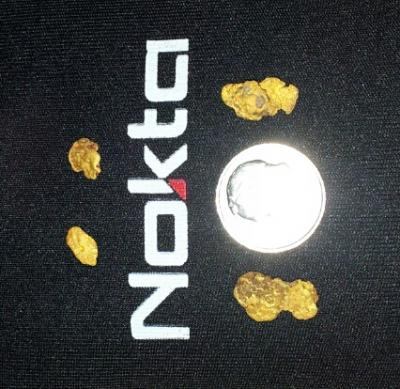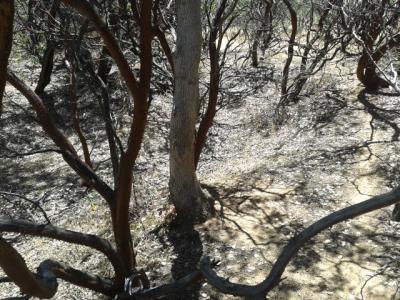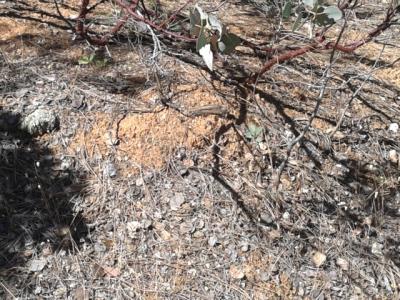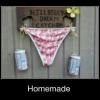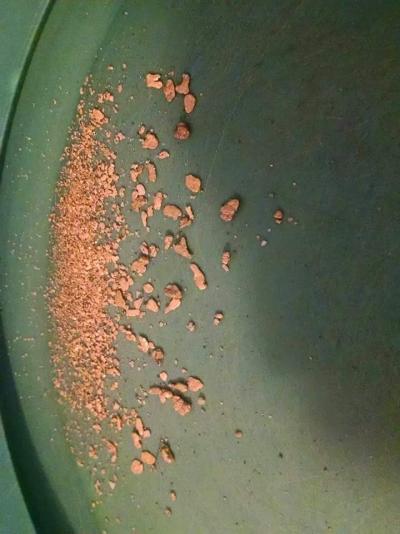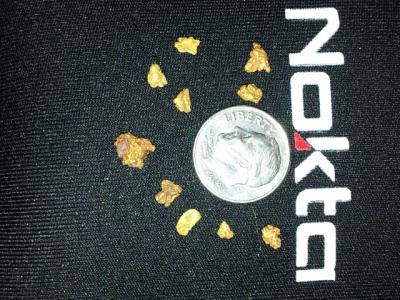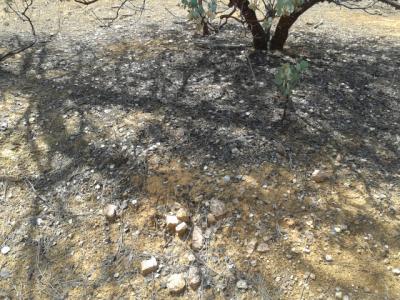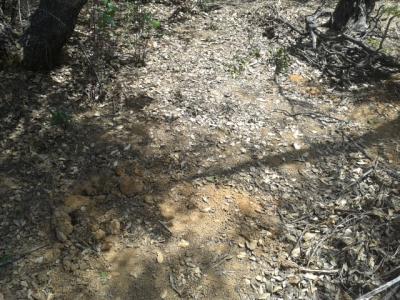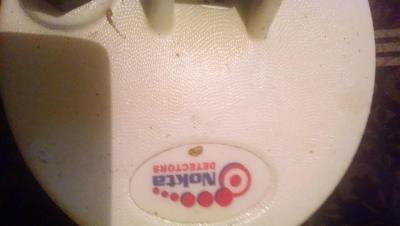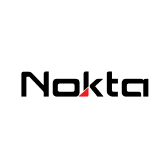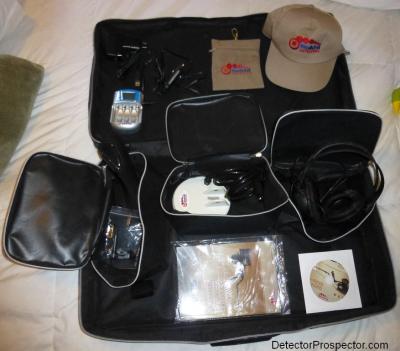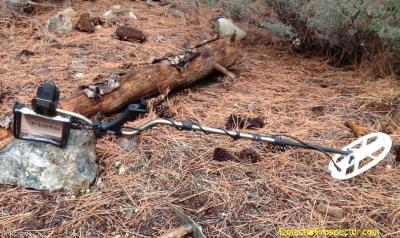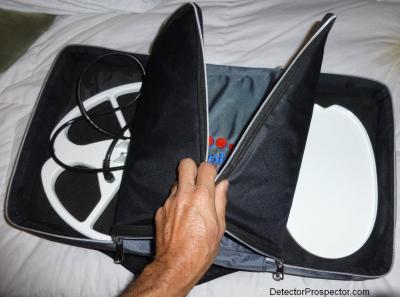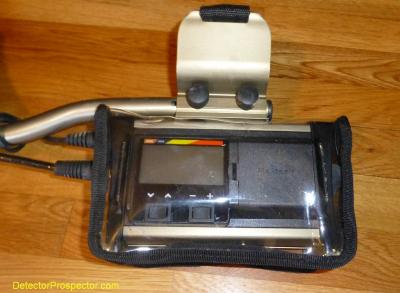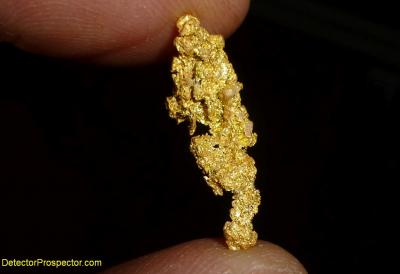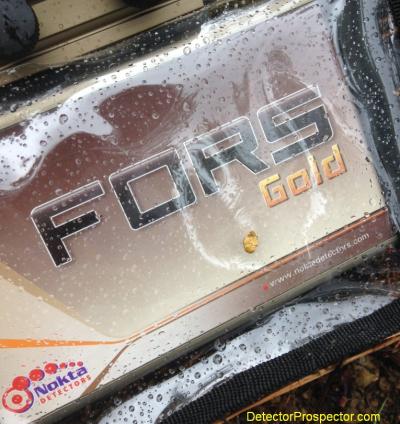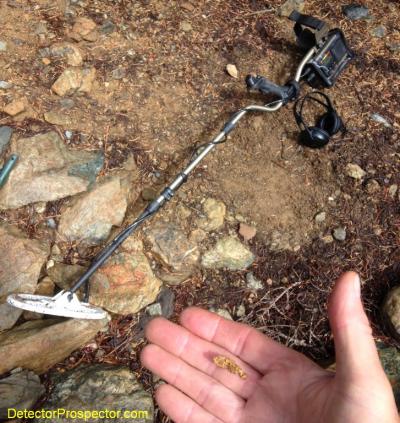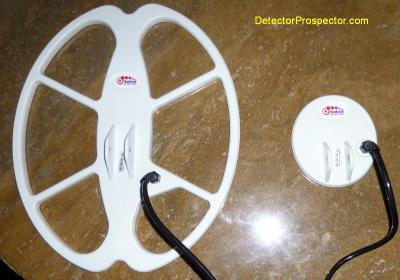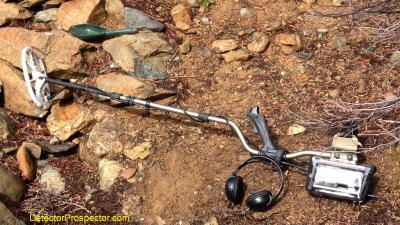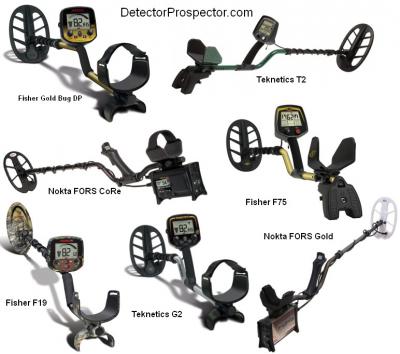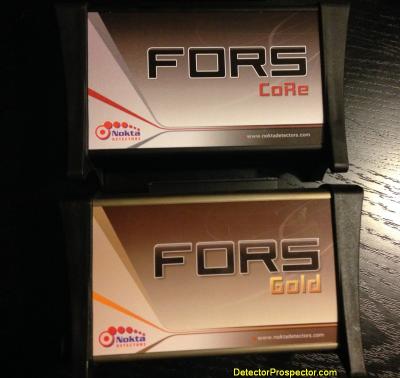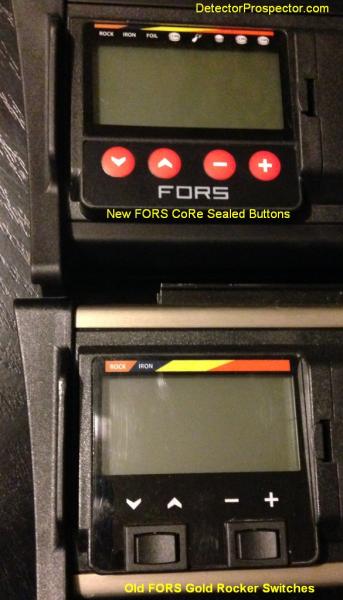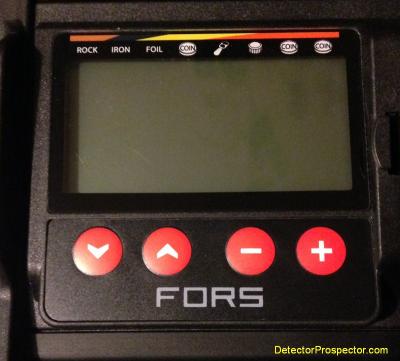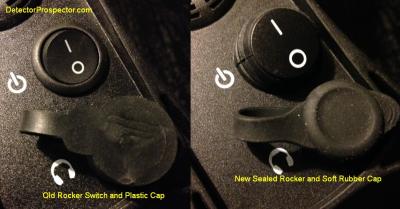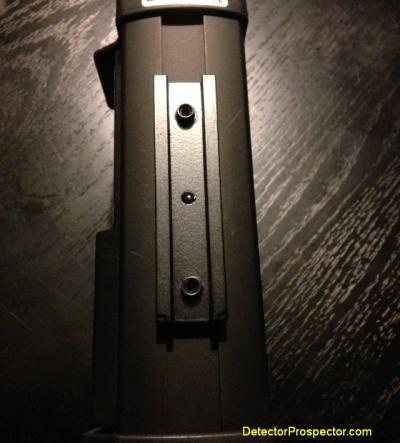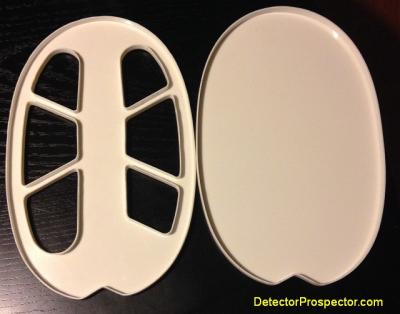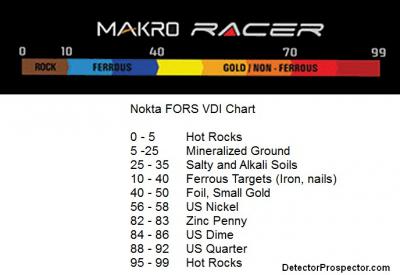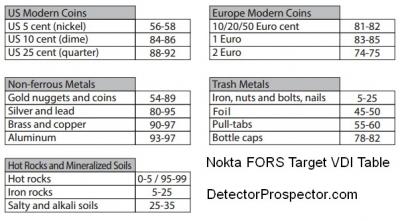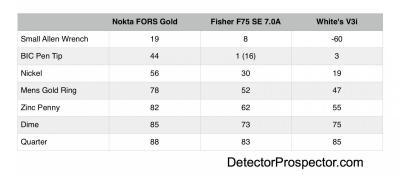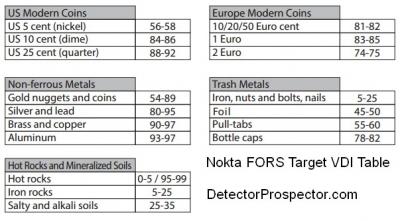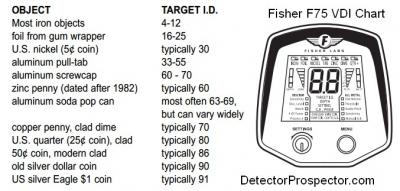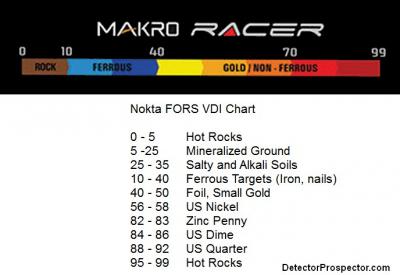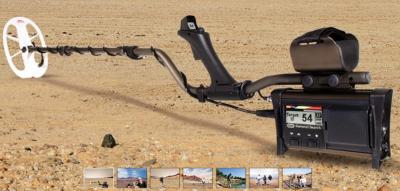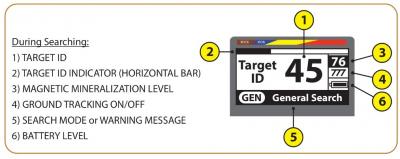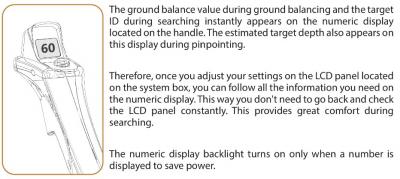Search the Community
Showing results for tags 'nokta fors'.
-
Hello,. Just got back from my mini vacation to Tahoe. Had 1 day left before work again and it wasn't too hot. Only in 90's. So figured better get out before our coming heat wave. Went to my cousins property, where we have found some nice gold in the past. And there is no hobos and garbage for once. Just bears. Manzanita berries are ripe and the bears come down to lay around and fill up. I can deal with bears. We have detected there in the past with our gb pros and have grided the place pretty well. But I wanted to try Fors Gold on this ground. And my partner wanted to try her gpx with camo coiltek coil. The ground is one of the worst mineralization around here. It is a contact zone with 3 bedrock types. Most the gold was created in clay seams and is shallow. The old timers had dug shallow seams and some very deep pocket concentrations up to about 15 feet aswell. The biggest gold we found in the past was 1.7 oz with gb pros. So I set my Fors up in boost mode 85 sens for start. Was able to find a nice 1.4 dwt piece of gold right off. Where we allready detected with past detectors. Then another smaller one after another 1/2 hour. Then after a few more deeper leads found a good target mixed in with iron junk. Ended up getting another 1.1 dwt piece and a small one out of same hole. Both dwt pieces were at the 7" mark. All together ended with 2.8 dwt. Fors gold did very well finding more targets In previously detected ground. My partner did very well with her gpx also finding 6 more pieces. Good luck!
-
Has anyone done anymore Testing on the Fors Gold In Hot Ground, Thanks,, John
-
Took my Nokta to an old creek.... Well I gave the machine a few swings along the bank and found 1 piece so I put the coil in the 6" deep water and sweeped the ground ...not one target ...hit another spot in the water about 5ft away and the machine went nuts... The water was about a ft deep so I pulled out my trusty Keene A52 ...my shovel and classifier and got busy... The pic shows my results 2.8 dwt in an hr and a half...I will be back at that spot over the weekend...for a full day....
-
Hello, We had 3" of rain last night so I decided it would be a good day to hit the mounds again with Fors Gold and a rake. Lucky enough to have my dad run our business while I was out playing around with gold and my vacationing partner. I did some good raking down of the deep pine needles and branches again and managed to find 9 little pieces with Fors Gold. Afterwards I used my wifes 5000 with the new coiltek camo mono and found a .4 dwt in some deep ground. Had some tresspassing hobo problems again, but had a good time on my day off out playing around with Fors Gold and my dedicated partner. Good luck!
-
My complaint about the Nokta... I have put about 60 hrs on my machine in the 2 weeks I have had it... the 5.2" coil cover already wore through and cracked exposing the bottom of the coil... I have over 150 hrs on my gb2 in 5 mths and its not even close to wore out and I use my gb2 hard....am I the only one with this problem...gonna contact Nokta.... I would think they should last longer than 2 weeks..I read that they addressed this issue... The one I have is paper thin..
-
Well as most of y'all know I bought new Nokta Fors Gold alittle over a week ago... The more I use this machine the more I'm impressed with it... Well after about 40 hrs on this machine I finally found a piece of gold with it... I was using the little sniper coil and after 2 hrs of finding every lead shot weight and fish hook in the bedrock along the bank of the Trinity river I was about to call the lunch bell when I got a hit that sounded similar to the lead but had a slight high pitched crackle sound (hard to explain) the target i.d. was 44 on the first swipe then 45 on the second...needless to say my pick went into action and went to town on the bedrock and after 8-10 swings of the pick I moved enough bedrock to wear I was actually able to see it wedged in there... Yup this dude was happy as a puppy born with 2 lil peters...lol lol lol I was impressed that this machine with only 15khz was able to hit on a piece so small..
-
now that I bought this machine...I need advice on settings etc etc etc etc ...every bit of advice would help...
-
Ok guys, i am in need of more input. i own fors and gmt amd vsat. i havent had chance to use 705 yet. i have very little time on any given machine as well. terrain- small gold, med to high hot rocks, b.i.f., Trying to narrow down primary candidate. Could golden hawk b in running? Dad has gb 2 its not going anywhere soon.
- 7 replies
-
- minelab detector
- nokta fors
-
(and 1 more)
Tagged with:
-
Enjoy!
-
Nokta Engineering FORS Gold Prospecting Metal Detector This metal detector review is a first for me in one way. Until to now I have not been very willing to use detectors not made by the well known mainstream manufacturers. The key reason has always been service and parts support concerns plus the ability to easily sell the detector should I ever choose to do so. Nokta Engineering is a company based in Istanbul, Turkey since 2001. They have been around for over a decade now and so can be considered well established. I was aware they had a new 15 kHz VLF detector out called the FORS Gold but had not tried to acquire one myself. I was a bit surprised when the company contacted me and offered to send me a FORS Gold for evaluation. It turned out members of a popular gold forum had suggested they do so to get a review by somebody relatively well known. My response was “I would be happy to give the Fors Gold some use in the field and add it to my online list. I must warn you however that I am the sort of person who is honest with my opinions.” To their credit that did not deter the people at Nokta and so a unit was sent to me direct from Turkey. It arrived on my doorstep in short order. Please note any of the following information may change with time and so check for the latest specifications, especially pricing. The Nokta FORS Gold is currently available in two configurations. The basic package includes the detector with 7” x 11.2” open DD search coil, form fitting open scuff cover, closed bottom scuff cover, headphones, four AA batteries, instruction manual and DVD. This package currently retails in the U.S. for $999.00. I was sent the Pro Package which includes the detector with three coils – the standard 7” x 11.2” DD search coil plus a small 4.7” x 5.2” DD coil and large 13.3” x 15.5” DD coil. Each coil comes with a scuff cover installed. The open 7” x 11.2” coil comes with an open scuff cover installed, plus an extra closed bottom scuff cover is also included in the package. A two piece rain cover is included; a clear vinyl cover for the control box, and a separate form fitting neoprene/nylon cover for the handle that has a little vinyl window to match the handle mounted LCD readout. Instead of alkaline batteries four NiMH rechargeable AA batteries are included with a smart charger. A nice touch is that adapters for 110V, 12V, and even USB are included. There is a set of stereo headphones, a Nokta hat, a treasure or accessory pouch, and of course the operating manual and DVD. This all comes packed in a very professional heavy weave nylon carry bag. The bag is of exceptional design with two large separate pouches in addition to the main compartment, which itself has three internal zipped storage compartments. The bag can be carried suitcase style or work as a backpack with the included shoulder straps. This package currently retails in the U.S. for $1399.00. View of open case and many of the accessories The large accessory pockets The standard package will do the trick if you are on a budget but in my opinion the Pro Package represents an outstanding value for somebody serious about using the FORS Gold to its fullest potential. It is the most well thought out and completely appointed detector package I have ever seen offered by a manufacturer for nugget detecting, or any other detecting for that matter. With that said let me get the hard part for Nokta over and pick on them a bit. First of all, let’s look at the detector itself. Having seen the pictures before, I was surprised at how small the control box actually is. The online photos are taken from an angle that makes the control box seem much larger than it really is, and so this is good news. The overall quality, fit, and feel are all very good. Still, there are areas that could use improvement. The main display and controls are, if you are right handed, on the side of the control box next to your leg. The display has lots of great information, but most of it is of little use when in use because you cannot see the display. This is alleviated somewhat by the small handle mounted LCD readout that displays the most essential information. I found the side mount display was just fine for making adjustments to detector settings or checking the battery level, but when I actually used the detector the side display was easy to just forget about and ignore. There is nothing there you have to have per se but on the other hand it really is a well thought out display and it is a shame it is mostly wasted in normal use. There are two rocker switches on the side below the display for making control adjustments. One toggles through menu selections, and one adjusts the value of the selection. These rockers are bound to collect dirt and water and I was surprised they did not use sealed touch pad style buttons. It is a good idea to use the control box cover included in the Pro Package just to protect these rocker switches from dirty gloves or hands. Accessing the controls and seeing the display would be especially awkward for left handed people. View of control panel and rain cover Imitation may be the sincerest form of flattery, but Nokta took it a bit too far in making the control box and handle mounting arrangement nearly identical to that made by a certain Australian company. The rear mounted box does balance very well, but assembling the split handle and box onto the rod is just as frustrating with this design whether it is made in Turkey or Australia. Once you get it together you will never want to take it apart, except you must to get it back into that nice carry case, or to put on or take off the control box cover. If nothing else longer mounting bolts would help but a snap on or bayonet mount would be better. I was notified by a forum member and did confirm the listed 3.9 lb weight with batteries is inaccurate with the actual weight with batteries being 4 lbs 6 ounces or 4.3 lbs. The headphones are actually pretty good quality Phillips SHP1900 headphones that are comfortable and have good sound quality. They have a 1/8" jack and come with the 1/4" adapter. However, I found the straight 6 foot long cable to be a bit much and had to wad the excess up and tie it up. A curly cable would be preferable but this is a very minor quibble given that most people will use their favorite headphones they already have. And the Phillips are better than what often comes with detectors. They have no volume controls but the FORS Gold has its own so that is not a problem. One last little issue. The included scuff covers are paper thin. If not pried off very carefully they are very easy to split on the edge, as I found out taking one off to clean sand out. Something a little thicker or tougher would be good as these will wear through very quickly. **************************************** IMPORTANT UPDATE 3/1/2015 - Nokta is an incredibly responsive company. Shortly after this review, it was revealed left handed models would be made available on request! Also, the coil scuff covers were upgraded to be thicker and tougher. Finally, the rocker switches were upgraded per the post at http://www.detectorprospector.com/forum/topic/551-nokta-fors-new-panel-power-switches-headphone-cap-scuff-covers/ This rapid response to issues raised here and elsewhere is flat out amazing to me; I have never seen anything like it from other manufacturers. This reflects very, very well on this company. **************************************** OK, now to the good stuff! Frankly, the Nokta FORS Gold is one of the better VLF nugget detectors I have ever used, and even better it is a very capable detector for just about any type of detecting. It appears to just be a variation on another Nokta model, the FORS CoRe (Coin Relic) and shares nearly all the same features. The CoRe features slightly different discrimination options plus a dedicated beach mode, whereas the Gold focuses more on nugget detecting features, but from what I am seeing both detectors can do just about anything very well. The FORS Gold default settings are almost perfect for somebody with little or no detecting experience. It boots up in Boost Mode, which is a two tone mode with ferrous items giving a low tone and non-ferrous a high tone. Simply turn the detector on, hold the ground balance button on the end of the handle down, bounce the coil up and down for a few seconds, and go nugget detecting! It really can be that easy with the FORS Gold, and for that reason alone it is now one of my top choices not only for professional VLF operators but also novices. I did some testing initially in a park and I found the Boost Mode to have very good target separation, something highly valued when hunting areas thick with trash items. The optional three tone discrimination mode made for easy coin detecting in park type settings, with all modes augmented by target display information in the LCD screen on the end of the handle. While pinpointing, this displays depth (in centimeters) and while ground balancing you see the ground balance numbers. I also took the FORS Gold to a beach for a day, and found it to be a very capable beach detector with exceptional depth and sensitivity to small items. The only area where it would be a lackluster performer would be on wet salt sand or in salt water, because all single frequency VLF detectors suffer in that area. Still, it will get you by. The FORS CoRe would be a better choice for those wanting to hunt salt water beaches since it has a dedicated beach mode. The bottom line is I really do think the FORS Gold is a detector suitable for many detecting tasks, and I think it will see great acceptance with relic hunters or jewelry hunters in particular in addition to the intended use as a nugget detector. Accessory Large 13.3” x 15.5” DD coil and small 4.7” x 5.2” DD coil Where the Nokta FORS Gold shines however is in its main use for nugget detecting. I have to admit I have been pretty much a pulse induction sort of guy in recent years, but I have been reminded once again recently that very good nugget finds may very possibly be best looked for in the trashiest of locations. People using PI detectors tend to shy away from heavy trash, yet mining camps and work areas were often right in the middle of the best gold bearing ground. There still is a serious need for detectors with exceptional trash handling capability, and that means VLF detectors. Yet those detectors also need to be able to handle the worst mineralized ground and hot rocks, an area where VLF detectors are weak. The FORS Gold has a relatively straight forward all metal mode, which they label as the General Mode. There are some features however not offered by most of the competition all at the same time in a single detector. First, while in all metal mode the visual discrimination feature is still engaged via the LCD display on the end of the handle. This offers the ability to identify items while still in the powerful all metal mode. Better yet, the FORS Gold also offers up an optional automatic ground tracking mode in addition to the manual ground balance. Some detectors offer one or the other of these features but very few offer both the ability to visually identify targets while in all metal mode plus both manual and automatic ground tracking. The FORS Gold can be ground balanced by simply pushing the button on the handle and bouncing the coil. But you can also override the setting obtained by doing so with the plus and minus rocker switch. In other words, full manual ground balance. The third method, full automatic ground tracking, is engaged with a rocker switch on the front of the control box, and so can always be set as on or off before even turning the detector on. I and many others tend to recommend always using manual ground balance. However, if possible I always prefer having automatic ground tracking as an option that can be enabled or disabled. You see, I want all options at my disposal, even those I may use but rarely. Just by chance, a very good reason came up while I was out nugget detecting with the FORS Gold. I ran into an area with some really pesky hot rocks. There are several ways of dealing with this. In a pure manual mode machine you try and find a compromise ground balance setting and probably lower gain or sensitivity levels. Then you just try and discern sharper nugget sounds from softer hot rock sounds. Obviously, this can require some extra expertise and a trained ear. Severe hot rocks can be trying for the best of detectorists. When hot rocks and ground conditions get severe, automatic ground tracking may help. In some cases, it can be almost magical. So it was with an area I ran into. In all metal General Mode the threshold was all over the place as I ran across lots of small hot rocks. I switched to automatic ground tracking, and they basically disappeared. The machine went from being a bucking bronco to a mild mannered pony with the push of a button. In theory ground tracking can track out faint signals, but this can be minimized with proper coil control. Wide continuous sweeps. It certainly is no worse than the nuggets that will get missed thinking they are hot rocks, and in my opinion in this type of scenario automatic ground tracking can be critical to continued operation in conditions that would cause most people to quit in frustration. Nokta FORS Gold in the field With the FORS Gold you can also go to the Boost Mode, where many hot rocks will just read low tone as ferrous items. Boost also offers an adjustable iron mask feature that can be increased until the offending hot rocks do not signal at all. As always, there are tradeoffs in the form of possible missed gold, but it is very important to always concentrate on getting the most found gold possible, even if that means compromises to some degree to get it to happen. Nobody gets all the gold, the idea is to maximize the amount of gold you do get to the greatest degree possible given whatever tools you have at your disposal. The visual target id feature can even be employed to deal with certain high reading hot rocks that refuse to yield to other solutions. The rocks may cluster around a certain target number, which can then be ignored. Again, not perfect, but another possible option to be used if need be. Look at all the other gold nugget detectors out there and ask if they can run in all metal mode while simultaneously displaying target id numbers on screen, and if they offer ground grab, manual ground balance, and automatic ground tracking. The surprising answer will be no. No other nugget detector offers all these options in a single unit. Only a few top end expensive coin detectors do so but they lack the nugget detecting power of the FORS Gold. This alone makes the Nokta FORS Gold a unique and valuable addition to the VLF nugget detecting world and one worth serious consideration There are of course the normal settings such as threshold level, volume level, and gain or sensitivity level. There is also a frequency offset to deal with potential electrical interference or possibly even another FORS detector operating nearby. Very nice touches are adjustable audio tones to customize the sounds produced for people who suffer hearing loss at certain frequencies. This should be standard but is all too rare on nugget detectors. There is an adjustable backlight for the main screen and handle mounted LCD. Then, just like the ads “but wait, there’s more!” The FORS Gold has a small LED flashlight built into the handle to illuminate the work area in low light conditions or to just use as a flashlight when you get back to your vehicle in the dark. And in a nugget detecting first, there is an adjustable vibration mode built into the handle that operates in conjunction with or independently of the audio. This feature alone can be a real benefit to people with hearing loss and in theory will allow somebody who is totally deaf to go metal detecting effectively! Now that is some real cool out of box thinking and the reason we need more companies like Nokta in the business. Even people with good hearing can benefit as most of us have run into high wind or other situations where hearing the detector is difficult at best. Anyone who has ever used the new pinpointers already knows how this works. You even get the option of ten different languages for the operating menu system. These guys and gals are thinking of everything. Don’t forget the optional coils. There is a hot small coil for working bedrock pockets and crevices sensitive down into the grain range, and a large coil perfect for pulling large gold out of tailing piles. I only used both coils briefly because the stock coil serves as the best all around solution, but somebody going all in with Nokta will find both these coils valuable additions to the toolbox. Does it seem like I am gushing? Perhaps I am, and that is probably because my expectations were pretty low. I have simply seen too many detectors over the years, so much so that many just seem like rehashes of the same old same old. Nokta has managed to not only build a detector that is very easy to run right out of the box, but with enough advanced features to wow even a jaded detectorist like myself. Well, come on Steve, what about some gold?! It is hard not to like a detector when I take it someplace with nasty hot rocks, and it handles them with relative ease. It gets even better when I put it into Boost Mode and wander into a trashy location getting lots of low tones, and then dig a few nuggets right in the midst of the trash. I went where I never would have went with my PI and the FORS Gold found gold when in all honesty I was expecting to write this report telling you about the bullets I found. It is not easy to go find gold, and so I was really just expecting to find bullets and shell fragments and I was keeping them to show you what the FORS Gold could do for this report. I was going to explain how bullets read like gold and there you go. Seriously folks, I really just got lucky but the FORS Gold gets the credit. My first nugget found with the FORS Gold - and yes, those are rain drops on the rain cover! After three nice nuggets I was as happy as I could be, when I get another signal and dig up what I thought was some crumpled up foil. Then I realized I was looking at gold, and an exceptional 2 gram nugget revealed itself to closer inspection. I did something I almost never do and wrapped it in tissue to protect it until I could get it home and properly clean it. The Nokta FORS Gold helped me find one of the most delicate gold specimens I have ever found. I ended up with 3.3 grams total and enough information to finally file this review. 2 grams fresh out of the ground 3.3 grams gold found with Nokta FORS Gold I went into this basically just wanting to see if Nokta, as a relatively unknown player in the U.S. market, was a company that was not selling junk. Sorry, but I have seen horror stories about some overseas companies and I had no idea where Nokta ranked in all these new names showing up on our shores. The fact is Nokta has well exceeded all my expectations and then some, and they seem very eager to do whatever it takes to back up their product. I am going to go out on a limb here and recommend the company and at least the two FORS detectors without reservation. If what I am seeing is any indication Nokta is going places. I look forward to seeing what they do in the future, but for now they have a very formidable and competitive offering well worth serious consideration by those looking for a VLF gold nugget detector. My thanks to AzViper for stirring the pot at TreasureNet to get the ball rolling on this, and to Dilek Gonulay and the other fine people at Nokta for affording me the opportunity to try out the Nokta FORS Gold. Closeup of 2 gram specimen found with FORS Gold Disclosure Statement More Information on Nokta FORS Gold This post has been promoted to an article
-
Hello all! As you know, we made an announcement in December regarding Makro acquisition by Nokta. For those who read the announcement thoroughly, one advantage of this merger we pointed out was that ‘’we will not only offer a richer product portfolio to our customers but address the whole market demand with products at different price levels.’’. This requires us to position the current and future Makro and Nokta products in the market correctly. Taking into consideration the new Makro model ‘’Racer’’ that is being launched as well as the Nokta products that will be launched in 2015 and the years after, we need to make a revision in our FORS Gold/CoRe models. Below are the revised prices. MSRPs FORS Gold $699.00 FORS Gold PRO PACKAGE $999.00 FORS CoRe $699.00 FORS CoRe PRO PACKAGE $999.00 We really hope the new pricing will be appreciated by those who are interested in the machine. We also understand that this may upset some customers who recently purchased the device. The last thing we want is unhappy customers - one unhappy customer is too many for us so if you purchased the device within the last 30 days, please contact me at dilek@noktadetectors.com to get a price adjustment coupon that can be used towards your next Nokta purchase. Thank you all!
-
I have now put enough time on all these units to at least reach a basic conclusion in my own mind. And that is that they are far more alike than different. Trying to get clear differences to appear in actual field use in highly mineralized ground is a true exercise in hair splitting. A couple detectors that can be added to the title list are the Teknetics T2 and G2 models. First Texas owns Fisher and Teknetics. The T2 is the predecessor of the F75. They are not exactly the same detector (they do not share coils) but almost identical in performance. The G2 really is just a Gold Bug Pro in different clothes. 13 kHz - Fisher F75 and Teknetics T2 15 kHz - Nokta FORS Gold and FORS CoRe 19 kHz - Fisher Gold Bug Pro, F19, Teknetics G2 In actual use the frequency just about says it all. The lower frequency F75 and T2 are just a tad less sensitive to very small low conductors, like a small gold nugget. The 15 kHz FORS is almost an exact match to the Gold Bug Pro/F19/G2 for sensitivity to small low conductors and so despite the bigger frequency gap I would say the FORS models come closer to the higher 19 kHz models than the lower 13 kHz models. I have to say it all just boils very much down to the feature list, and again, they line up pretty well. The less expensive Gold Bug Pro and G2 have a more limited feature set than the F19. The F75 has the most options for tones and settings at the highest price on the list. The Nokta units at their new lower price are a real good value. For me when it came down to actual performance the Gold Bug Pro/ F19 were so close to the FORS models I let the two Fishers go and kept the Nokta. Basically just to get the automatic ground tracking which can be very useful in variable ground but also the three tone option, which is nice for coin detecting. I also like the way the Nokta units balance better with larger coils. All I can tell anyone at this point if you want a detector to use for nugget detecting and also for other purposes, the Gold Bug Pro/F19/G2/FORS Gold and FORS CoRe are so close in actual field use that it will all come down to the operator and ground variations. I think the machines are a toss up from a performance perspective and so just line up the feature list and go with whatever floats your boat. I think for sheer value at this time the Nokta FORS models are tough to beat. The T2 and F75 give up a slight edge on small low conductors. What this means is that all the previously mentioned models are better for smaller gold nuggets. The trade off is the T2 and F75 are better all around detectors for general purpose use, gaining in coin and other high end conductors some slight advantage simply because the machines are not quite so sparky on tiny non-ferrous trash. In moderate to low mineral ground conditions the T2 and F75 have a clear depth advantage on high conductive coins but in very mineralized ground the advantage is nearly non-existent. In my case at least I feel like there is a 90% overlap between my latest version F75 and the two FORS models. If I head out the door right this second to go hunt coins I am more likely to grab the F75 as I like the extra tone schemes. There is the 3H mode that gives a high tone beep on all normal coins but also takes US nickels, which usually reads as a mid tone, and puts it up in the high tone range also. This is a great cherry picking mode. The standard 4 tone mode is great for cherry picking jewelry digging the low mid tones. I like the big screen and the backlight, etc. So I am also keeping my F75. But if I was heading out the door chasing gold nuggets right now in a really trashy location and not wanting to use a PI, I would grab the FORS instead. It pulls low conductors like small gold nuggets out of the ground better than the F75. Not by a huge margin, but enough to matter to me. And that is where it will stay for now. I am waiting to get my hands on the new Makro Racer models this summer, and using the F75 and FORS plus Racer units all summer. Then proceeding to phase two of the weeding process. I am trying very hard to get my detector collection down to just a couple PI detectors and a couple VLF detectors. It is down to that stage of the game however where it just needs a lot more in field use to let things sort out for me. What I can leave you with for sure right now however is that these are all very good detectors that are ridiculously close in performance. You really just can't go wrong with any of them. Mid frequency VLF technology has matured to the point where it is almost impossible for anyone to really stand out from a performance standpoint. Nearly all the performance debates I see on the internet about these models boils down to differences in ground mineralization more than the machines themselves. Just find one that feels right on your arm and sounds good to your ear and get to work! This is very much a work in progress and so as I get a chance to use the large coils or hunt under different ground conditions if I come up with anything if interest I will add it here. There is a related thread on VDI numbers and tones at https://www.detectorprospector.com/forums/topic/526-fors-gold-f75-v3i-tone-and-vdi-tidbits/. For detailed information on each model plus the latest prices visit Steve's Guide to Gold Nugget Detectors
- 13 replies
-
- 5
-

-
- fisher detector
- fisher gold bug
-
(and 1 more)
Tagged with:
-
I already have a Nokta FORS Gold and I just received a latest update Nokta FORS CoRe control box that will run on the same handle and coil assembly. This is really fantastic because back on October 11th I did a detailed review of the Nokta FORS Gold At that time I noted that I thought the control panel rocker switches were a problem as they would collect dirt and water. I also pointed out the left side mounted control panel would provide some hardship for left handed people. Nokta responded by almost immediately announcing a special order version for left handed people! Shortly after that they announced the control switches would be upgraded. I have never in my decades of experience working with metal detector manufacturers seen anyone respond so quickly is addressing physical issues with a model already in production. There was nothing wrong or defective. It was just things that could be improved on. It was a rather stunning response and really made me sit up and pay attention to the company even more. The bottom line is the LCD panel has been redesigned with a sealed touch pad. The power toggle has been replaced with one incorporating a rubber accordian type seal. The plastic cap covering the headphone jack has been replaced with a softer rubber version that seals better. The ground balance tracking rocker, which is in the downside facing protected end has been left as is, which is fine as this is a rarely operated switch anyway. I also had noted that the coil scuff covers were paper thin and subject to splitting when removed and not likely to last in any case. Nokta sent a couple new scuff covers along with the control box. They are much thicker and either the extra thickness of use of a different plastic mix now has them feeling much tougher, comparable to other good scuff covers on the market. This really should be nothing worth making a big deal out of except I think most people would agree we have all gotten pretty used to just generally being ignored. People make simple, sensible suggestions, and years go by with no change and no acknowledgement even of the suggestion. We have been told for ages changes like this just are not practical, so live with it. Well, looks like the game is about to change! One last note while I was shooting photos - I thought I would point out that the Nokta FORS control box has a couple holes in the rod allowing the box to shift forward and back for better balance. Most people probably do not know that the actual box mount is also adjustable via a sliding section in the slot on top. Just loosen to allen screws, slide around until you have it where you want it, and tighten. At one point I thought there would be little need for me to have the FORS after the new Racer comes out but this ability to custom balance the unit when using the 15.5" x 13.5" coil is actually pretty important to me so looks like the FORS will be sticking around.
-
The Nokta FORS CoRe and Nokta FORS Gold have the same target VDI (Visual Discrimination Indicator) number and looking the the Makro Racer I am pretty sure it will be the same. Here is a closeup if the Racer reference label along with numbers I have culled from the FORS manual and put in a more understandable format. This is of course a simplified chart with a lot of overlap in ranges. Tiny gold nuggets could run well down into the ferrous range in the 2 - 40 zone. Nokta FORS & Makro Racer VDI Chart 0 - 5 Hot Rocks 5 -25 Mineralized Ground 25 - 35 Salty and Alkali Soils 10 - 40 Ferrous Targets (Iron, nails) 40 - 50 Foil, Small Gold 56 - 58 US Nickel 82 - 83 Zinc Penny 84 - 86 US Dime 88 - 92 US Quarter 95 - 99 Hot Rocks From the FORS owners manual: More information on the Makro Racer More information on the Makro Gold Racer
-
Snow on the ground so time for a little bench testing. Fisher F75 SE version 7.0A (2013) with 5" round DD coil, Nokta FORS Gold with 5" semi-round DD coil, and White's V3i with 4" x 6" DD coil. The table shows VDI numbers on some standard items. The little allen wrench is like a small nail - a ferrous item. The BIC ballpoint is my standard simulated small nugget. The ring is my 14K plain gold band, around 7 grams. The VDI range on the Nokta runs from 1 - 99 with 40 and under generally ferrous. The F75 runs from 1 - 99 with 15 and under generally ferrous. The White's V3i runs from -95 to +95 with negative numbers generally ferrous. I say generally because in all three cases gold can run well into the ferrous range. Like by 10 - 20 VDI numbers into it! A few big lessons. The Nokta FORS VDI 1 - 99 range is skewed with high conductors bunched on the high end of the scale with most of the scale devoted to ferrous and low conductive items. This is ideal for relic hunters and prospectors. Silver coin hunters however usually prefer the scale to devote more room on the high end to possibly get a better handle on what is silver and what is not. The ferrous range of the Nokta actually runs all the way down into the ferrous ground range itself which is why there are 40 numbers devoted to it. The ID Mask setting defaults to 10 and if set lower allows ground signals to sound off. Since non-ferrous starts at 40 and I arbitrarily end low conductors at zinc penny on the upper end you have 40 - 82 or a spread of 42 points for low conductors. This really is no more than an average spread due to the large ferrous range. What I was happy to see is the simulated nugget (BIC ballpoint) nailing at 44 as a non-ferrous target. Contrast this to the F75 1 - 99 range. There are only 15 points in the ferrous range with the extreme low end represented on the Nokta scale truncated roughly in the middle. However, this leaves 16 up to 62 at zinc penny for a low conductor spread of 46 or slightly better than that on the Nokta FORS and leaves room for a little better definition for high conductive coins also. There is a ten point VDI spread between a dime and a quarter versus only 3 points on the Nokta. What disturbs me on this particular F75 is that having tried multiple coils I am getting the same result on the simulated nugget test. It wants to nail at a solid 1 which is well under the ferrous 8 reading for the allen wrench. This is not shocking but it is not good either. I can get the ballpoint to break in at 16 occasionally but it should be there hard and solid, not rarely. I had Keith Southern test his updated F75 and it seems to do better. I need to test this again when and if I ever get an upgraded F75 but it does confirm my suspicion that at least some Fisher units are not properly aligned at this critical break point. The White's V3i slays both of them with White's standard spread of 190 VDI points with half that devoted to ground and ferrous. A full 95 points is devoted to non-ferrous, giving a nice spread across the whole range. The V3i is a three frequency unit and the 22.5 kHz frequency employed allows it to easily nail the ballpoint test with a solid VDI of 3. White's even allows the 22.5 kHz frequency to use a native VDI range that skews and expands the low conductive range that delivers a VDI of 10 on the ballpoint, a very nice cushion between it and a ferrous reading. you have from 1 all the way up to 55 for zinc penny slightly beating both the Nokta and F75 for VDI resolution on low conductors and still room left for very good definition in the high conductor range. These detectors can employ a dual tone mode that delivers a low tone on ferrous targets and a higher tone on non-ferrous targets. The break point on the Nokta and F75 is preset at the factory VDI breaks of 13 and 40. The V3i you can customize not only the VDI break point but the tones. The F75 dual tone mode is pretty straight forward, with the volume being weaker or louder depending on the strength of the signal. In other words, a modulated audio. The Nokta Boost or DI2 mode uses a VCO (voltage controlled oscillator) audio where both volume and tone increases with signal strength. Anyone that uses a Fisher Gold Bug is familiar with VCO audio. It is rather unique and some people like it, others do not. Again, the V3i allows the tones to be customized any way you want, with either VCO, modulated, or even unmodulated options. Things get more interesting in Nokta DI3 or F75 three tone options. The low tone break for ferrous is the same but a third higher tone is added. On the Nokta zinc pennies and higher or from 80 on up delivers the third high tone. On the F75 it breaks above zinc penny so those pennies fall into the middle tone low conductive range. Zinc penny is also where Indian head pennies and some other old coins can fall. If you hunt strictly by ear and dig high tones only you are going to pretty much dig all coins but nickels. With the F75 it is geared more towards silver hunters so zinc pennies, Indian heads and possibly other coins would get passed up as low conductors. But wait! The F75 also has a four tone option that puts that zinc range into into own fourth tone - problem fixed. You can chose a tone option that focuses more on silver only or one that breaks out that penny range. Jewelry Hunter would probably prefer the 3 tone mode and dig just mid-tones. The bottom line is the Fisher has more tone options for the coin hunters than what the FORS offers. Of note is that the Nokta DI2 dual tone mode uses VCO audio, but the DI3 three tone option defaults to a more normal modulated audio. DI3 favors a faster sweep speed than DI2 which benefits from going slower. A generality would be that DI2 is more powerful but DI3 better behaved. The V3i again is unchallenged. You can actually go so far as to independently set a separate tone for every single VDI number, and the tones can be any from 191 tone options. You can make low conductors high tone if you want. Absolutely nothing on the market compares to the V3i for audio and visual customization options. Well, this all seems pretty easy, right? Just get the V3i and get on with business. Sadly, these are air tests. You might ask, for instance, which detector did best for "depth" in these air tests, as if there actually is such a thing. I only pay passing attention to that but the F75 seemed to be doing very well in that regard. Here is the problem with this entire lesson and all my typing. When you put things in the ground all these nice air tests rapidly decay and fall apart. In very mild ground or on very shallow targets detectors can be amazing. In my ground unfortunately VDI numbers start breaking down at around 3-4 inches! What you discover is that if you get too focused on cherry picking VDI numbers good finds deplete rapidly. Almost all accessible public areas have been detected for decades. So the easy accurate VDI results have already all been cherry picked away. The best finds these days often come from digging targets that were passed up precisely because they did not give a perfect response. In my opinion, these days we have to cast a wider net and be willing to dig more trash to make those exceptional finds. What that means is huge numbers of VDI numbers and tones although flashy and fun often is no better than just using a simple two or three tone method and going for it. Styles differ vastly and because really this is about enjoying ourselves there is no right or wrong way to do things - as long as you are enjoying yourself. For me, something simple like the Nokta DI3 tone option for digging all high conductor possible coin signals actually works pretty well in actual practice. If I want coins except nickels just dig high tones and have fun. The F75 allows a special mode that kicks nickels into the high tone range so you can do the same thing and get the nickels also if you choose. The V3i by now you should know the story - set it up any way you want. Still, tests like these are very valuable to me in setting the baseline for performance in the field from which I can work to discover how much things vary and hopefully why. The theoretical goal if finding a machine that adheres as closely to bench testing results as possible in the field. Sometimes you get textbook results, but then at another location everything goes haywire. But unless you know where you are starting from you will have no idea what is going on. I will sum this up for now by saying that the Nokta FORS is a machine that appeals to simplicity and leans towards relic hinting and prospecting. That is not to say you can't do well coin detecting with it, it is just that it is not set up with coin detecting specifically in mind. The F75 nicely straddles the middle for all detecting purposes. The V3i is in theory the perfect detector but the reality is huge numbers of people have discovered more options does not always mean better detecting, and it is not unusual at all for people to abandon the V3i in favor of simpler machines. Unless you spend a vast amount of time with a V3i it is hard to feel like you have mastered the machine. The V3i appeals to my inner detector nerd but it is usually the case where in the field I prefer simpler machines myself. Still, I made the V3i part of all this just to see how it really does do if given a fair chance and at least when bench testing it is impressive to see all the bells and whistles in action. This is all just stuff I am finding out for myself. I have no real reason in reporting it to you other than just to be sharing some info that is taking at least a little effort to collect. It helps me digest it better trying to put it clearly in a form you can better understand. Hopefully it will help someone in their own choice in a detector. As you may be figuring out if you have not already, there are no best VLF detectors, just lots of really different VLF detectors. They all actually do a good job finding stuff but it is in how they go about it that differs so much. It is mostly a case of finding out what style and type of detector works best for you.
- 7 replies
-
- 3
-

-
- fisher detector
- nokta fors
-
(and 1 more)
Tagged with:
-
Dear Valued Customers: Based on customer feedbacks, we are making a few updates on our FORS Gold and CoRe models: 1. The menu rocker switches are being changed to membrane buttons. The new version will go into production the first week of January. 2. We are changing the on/off switch to a waterproof one. The new version will go into production the first week of January. Thank you!!
-
Nokta Engineering is a company based in Turkey since 2001. It appears they are looking to cash in on the Africa gold rush with a new detector model called the FORS Gold. I have to admit to being biased towards mainline name brand detectors. I want warranty service backed up in the US and widespread parts and accessory availability via a US based dealer network. I also prefer to own detectors that are well known and therefore easily sold when and if I decide to do so. However, there are interesting things happening outside the US when it comes to metal detectors, particularly in Europe. Minelab is proof the US manufacturers get complacent and ignore market demands in other countries. Minelab addressed desires in Australia for better prospecting detectors and European manufacturers are pursuing detectors made to extract non-ferrous targets buried in piles of ferrous trash. So I do keep an eye on what is going on elsewhere, just in case. In all honesty the Nokta FORS Gold appears to me to be "Just Another Mid-Frequency Gold Detector". The market is awash in VLF detectors running at 12kHz to 20kHz set up to do it all while being good on gold. The Nokta FORS Gold hits the 15kHz sweet spot in a 4.3 lb multi-use package available through US importer Kellyco for $699. It comes stock with a 7" x 11" DD coil and has a couple coil options, a 5" round DD and 13" x 15" DD. Not too much here out of the ordinary but I did find a couple things interesting. The unit has an LED flashlight built into the handle that illuminates the coil area. But what I really found intriguing is a built in handle vibrate mode much like we have in the Garrett and Minelab pinpointers. This could be a real aid for people with extreme hearing issues and in fact might allow a completely deaf individual to effectively metal detect with having to have eyes glued on meter. I like that. 10/16/2014 Update - I now have a Nokta FORS Gold. See my very detailed review at http://www.detectorprospector.com/forum/topic/352-detailed-review-of-the-nokta-fors-gold-nugget-detector/ More Information on the Nokta FORS Gold Metal Detector
-

What the World Finds Gold With
Rick K - First Member posted a topic in Nokta / Makro Metal Detectors
The competition for the scarce dollars of artisanal gold miners in the 3rd World is heating up. Nokta is a turkish (I said Russian before) company. All those clever engineers who don't have either US tech industry or US Defense industry are busy designing metal detectors. Notice the form factor - remind you of a certain PI detector. It's a VLF, of course.

